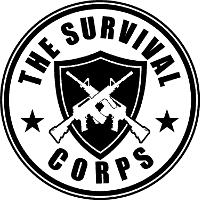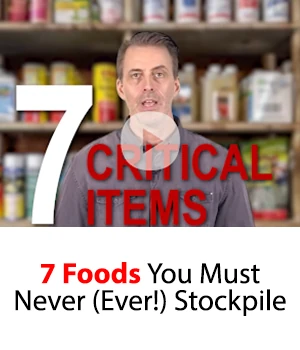Many people are familiar with the phrase Everyday Carry, or EDC. But if you were to ask them what it means, they would fumble at best to give you an answer. For others, the curiosity of getting the definition forces them to scan through images to get an idea. Very few resources adequately answer the question; what is Everyday Carry or EDC (as it is commonly referred to).
In this article, we aim to give you the right definition along with the items that make up the list. At the end of the article, you will learn why it is essential to have this vital survival gear at all times.
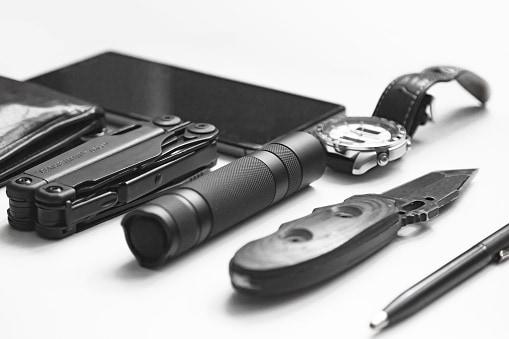
EDC Defined
An Everyday Carry is a term that describes the items that a person carries in their person every day and every time that they get out of their homes. A more appropriate definition is that they are the things you bring on a regular, consistent basis to help with dealing with the usual daily needs of modern society inclusive of possible SHTF scenarios.
The need for such gear is formed by the idea that most people will not carry a BOB or go-bag with them regularly and consistently. Besides, it would be awkward to bring a big bag sufficient for surviving for long periods of emergencies of unrest.
An everyday life carry aims to eliminate the need for you to weigh yourself down with a lot of gear that you will only need rarely. An EDC allows you to carry only the small, multipurpose, portable, and essential supplies for emergencies in your person all the time.
You can distribute these items in your pockets in everyday clothing and various clothing accessories such as bracelets, purses, fanny packs, small day packs, and even specific footwear such as long boots and vests fitted with pockets.
The Benefits Of EDC
There are many benefits you can enjoy with the EDC gear to your daily activities, belongings, and preparedness.
- Accomplish more and better: Adding new tools to your EDC gives you more access to many new functions that make your every day better or your life easier. Furthermore, you can maximize the performance and efficiency of your existing tools.
- Self-reliance and preparedness: You cannot predict a disaster or other calamities that cause emergencies. An EDC will help you make quick use of any opportunity to begin managing the survival situation. You will not rely entirely on anyone to increase your chances of survival
- Long terms savings: You may not see it as an investment but imagine having to buy the tools all at once during an emergency with money you do not have. Prospects are even better if you choose healthy, durable, and well-made tools to add to your EDC.
- Convenience: With a well-equipped EDC, you may not even need the help of an emergency crew or another person to get things done. Furthermore, you will not have to dig through cluttered drawers to reach for that specific tool you need because you have it on you.
- Personal gratification: One of the most important advantages of an EDC is that you have a personal relationship with your tools. It also gives an idea of who you are because what you carry defines you. You can organize your kit to reflect your passion, hobbies, and individuality.
The Most Crucial Elements Of EDC
What you include in your basic EDC bag is your prerogative to choose. It is only you who knows your level of preparedness and capabilities. However, some standard items or elements cannot miss any well-equipped EDC kit. Here are the parts and right gear options:
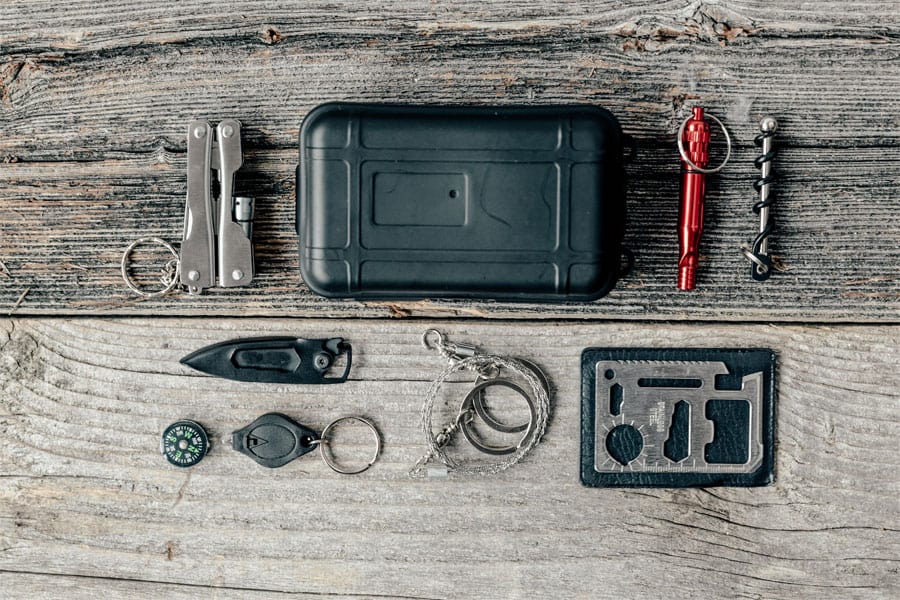
1. Cell-Phone
Smartphones, and other handheld devices, are one of the most important aspects of EDC. Without phones, you would not be able to communicate with people. You can use it as an alarm clock (provided that you charge it), a flashlight if the power goes out, and even to make calls in case of emergencies.
It is also crucial for everyday activities such as listening to music, playing games during downtime at work or school, taking notes on lectures or meetings, booking flights, hotels prior to leaving for vacations, trips, or business trips, etc.
Also, for reading books, articles online for studies or research purposes. You can search Google Maps anytime you need directions for your daily commute to work or school.
Even if you have a GPS in your car, it is still helpful to have a map of the area, just in case.
Furthermore, you always need your phones for taking pictures and recording videos: memories from past events and experiences (for future reference) and selfies with friends and family.
You can share these images on Facebook/Twitter/Pinterest/Instagram etc. to keep your loved ones posted or to tell stories about what you did or where you went.
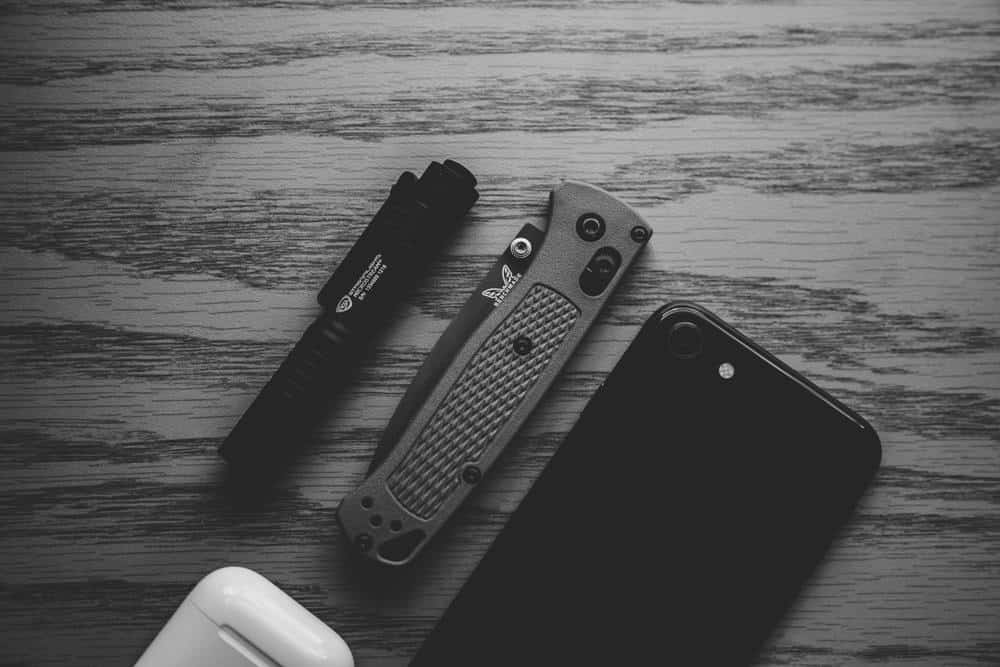
2. Keychain
Your keys are perhaps the most basic of all the aspects of Everyday Carry. Since you cannot leave your car and house key behind when you leave the house, it would make sense to add a few survival tools to your keychain.
The favorite items that will fit your keyring include miniature flashlights such as Streamlight Nano and small multi-tools such as Schrade Pry Tool. Right there, you have eliminated the need to carry several tools whose functions can be completed by the multi-tool in day-to-day life.
3. Wallet
Having a wallet helps us carry around necessary items such as identification cards (ID), debit, credit cards used for shopping, cash for when you do not use credit card payment when out at shops, restaurants, etc.
Also, business cards when meeting new people so that they can contact you when needed.
In the past, people used to carry coins in their wallets as well as various currencies from different countries when they traveled abroad, but now it is more common to just use one currency and you can exchange money at the airport or train station beforehand.
You also need your wallets for holding pictures of family and friends: people who you care about and miss during long periods of time that you are away from them.
Having these pictures helps you feel closer to them even though you are physically apart because you can look at them whenever you want/need reminding of those important people in your lives who mean so much to us. You can also add dedicated watches as they are beautiful in their own right.
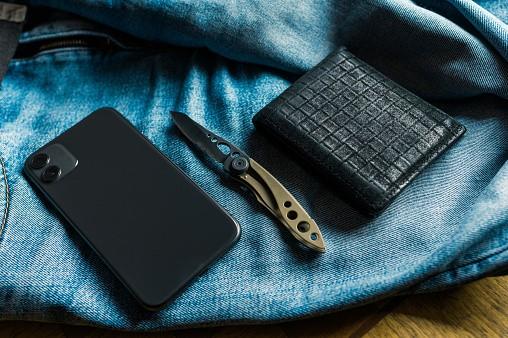
4. Knife
An item that should not miss from any EDC kit is a knife of some sort. The exception is when you have to travel places with checkpoints such as hospitals, train stations, and airports. You can choose a compact, sturdy, and reliable fixed blade pocket knife with a protective sheath or a compact low-profile folding knife (You can choose any type of knife at knife-edge). It is crucial to have a knife on you at all times because it can help you start in a sudden emergency.
5. Flashlight
Flashlights come in handy not only during nighttime hours but also during the day. People use flashlights for a variety of activities such as checking under their car hoods/bonnets to see if there is something wrong with the engine etc.
Also, for finding things that they have dropped on the floor, reading street signs at night when walking around unfamiliar places or cities, shining light in certain areas when looking for lost items, giving directions to people at night when they are in need of assistance because they cannot see well, etc.
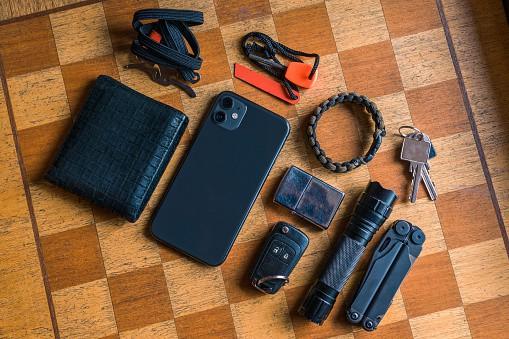
6. Weapon
Many EDC enthusiasts believe in having a personal firearm in their kit. A compact, low-profile and lightweight handgun is ideal for the Everyday Carry items kit. A firearm(with proper training) can offer you an excellent means to protect yourself and your loved ones in the event of an emergency.
However, you have to ensure you research your local laws to obtain the necessary permits (if any) before you purchase and carry a firearm for self-defense as not everyone can have it for personal expression.
7. Pen And Paper
Pen and paper allow you to write important information down in case you forget it or need to refer back to it in future situations when making plans, setting dates, times, deadlines, etc.
Also, for creating lists of tasks to be completed before certain deadlines (for example when studying for an exam), or taking notes during lectures/meetings for future reference.
8. Multitool
A common multitool functions and allows you to complete various tasks well beyond the capabilities of a small knife (e.g. opening bottles, cans, repairing objects). For example, one of the most common tools found on many multitools is the screwdriver because it helps you fix things that may not have been able to be repaired otherwise.
Other cutting tools include scissors (for cutting through materials such as thick ropes, metals, etc., or even thin plastic bags), a can or bottle opener (opening up canned food items), and a swiss army knife for cutting through different forms of material such as cardboard boxes, ropes, etc., all very useful when having to open packages quickly and cleanly. You can add even your teeth can with a knife safely handles cutting and slicing tasks in a common EDC bag.
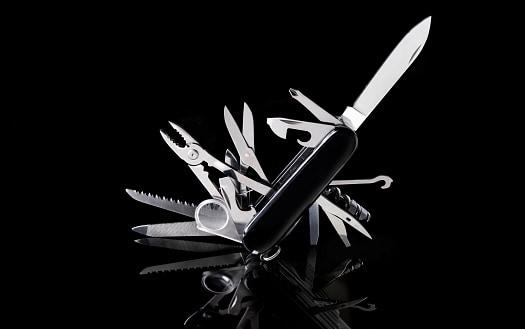
9. Water Bottle
It is true that water is available in many offices or installations where we work. Therefore, some people do not consider it part of every EDC. But, what will you do if a disaster strikes and you cannot get safe water to drink? If you can, make a water bottle one of the elements of your EDC kit.
A good recommendation is to choose a stainless steel water bottle to be part of your regular gear.
We insist on stainless steel water bottles because, in an emergency, you can use them as an improvised pot that is useful for purifying water, making hot drinks, and cooking food. This can prove to be a lifesaver if water sources are interrupted or contaminated.
10. Emergency Supplies
Emergency supplies are an umbrella term that encompasses some items that will prove invaluable in emergency situations. We recommend that you find a low-profile tin or a bag that can carry things like lighters, fanny pack, matches, several pieces of waxed cotton as well as another firestarter, a button compass, a whistle, and a small duck tape wrap.
Personalizing Your EDC
Ultimately, the things or EDC items you carry on your person regularly every day boils down to a personal decision. It also depends on the most typical locations you frequent and the kinds of emergencies, disasters, and survival situations you are likely to encounter. Other important determinants are the bags and pockets you have ready for the items. Just take these basics and then customize them to suit your needs and possible survival situation. Good luck and stay safe.
